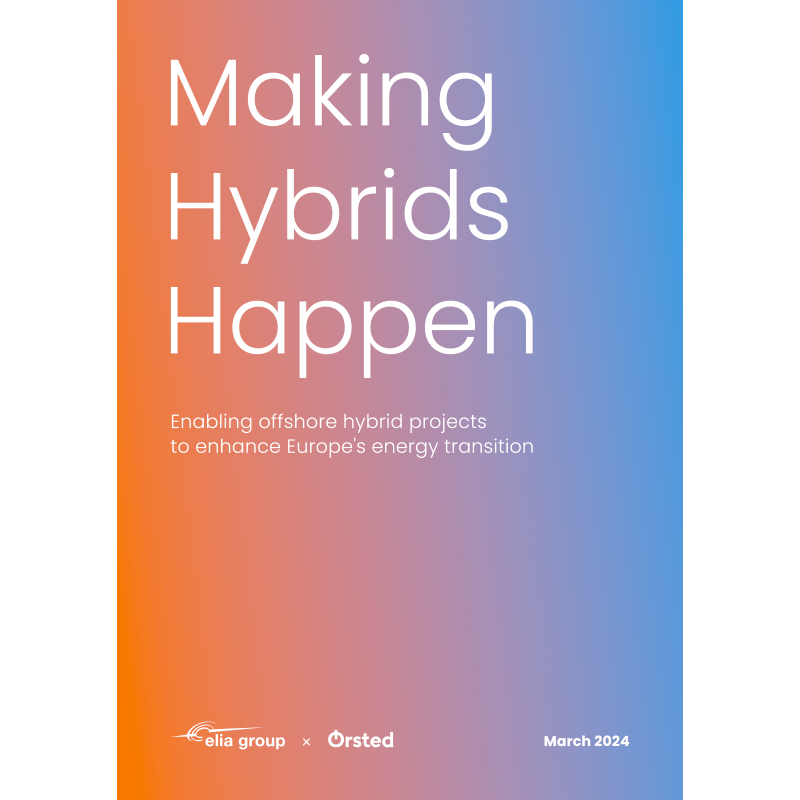The global transition to renewable energy is necessary – and complex. These experts help navigate the way.
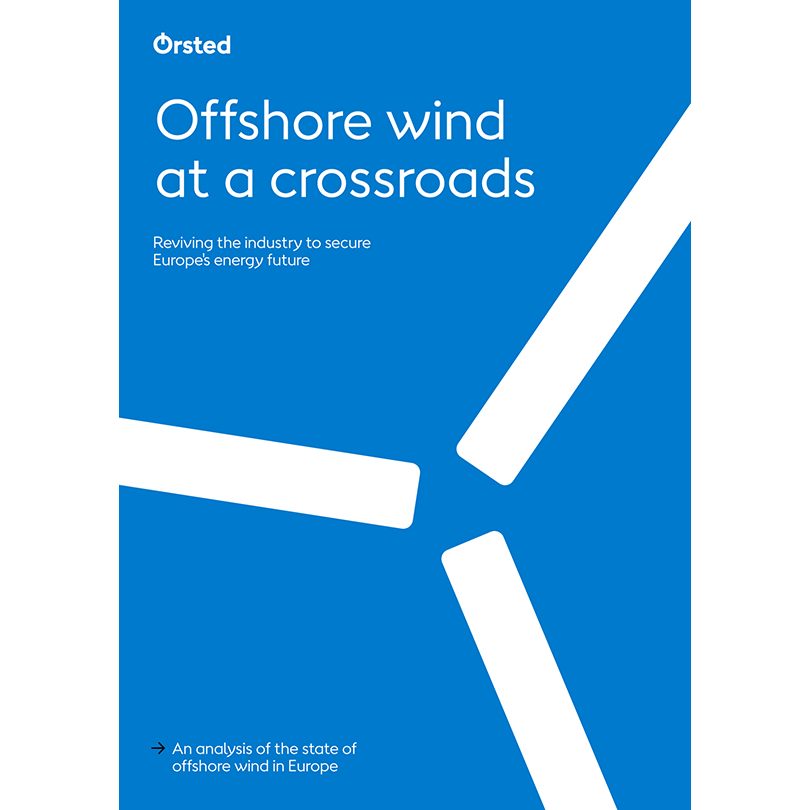 |
Offshore wind at a crossroadsEurope’s future competitiveness and security depend on an affordable, secure, clean energy system – with offshore wind as the cornerstone. This report outlines forward-thinking policies and industry commitments that could unlock its potential to provide the continent with affordable, secure, clean energy, generating jobs and enhancing energy independence.
|
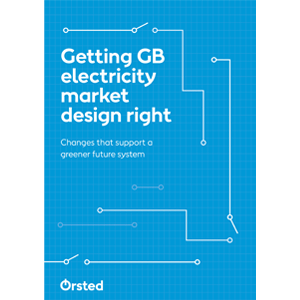 |
Getting GB electricity market design rightThe UK is at a critical point on its journey to net-zero. The green energy transition is happening – the challenge now is creating an electricity system that supports it. In this paper, we set out in clear terms the challenges faced by the current electricity system and the three associated changes needed to support the move to a greener future energy system. |
 |
Uniting action on climate and biodiversityThere is a new and necessary north star for renewable energy: to be a force for good on both climate and biodiversity. Ørsted is doing our part to deliver on this through our net-positive biodiversity ambition. Only if others act with us can we together deliver what is needed for people and planet. This paper sets out in clear terms why it is essential we consider biodiversity in the build-out of renewable energy, and what steps we believe are needed to ensure we get this right. |
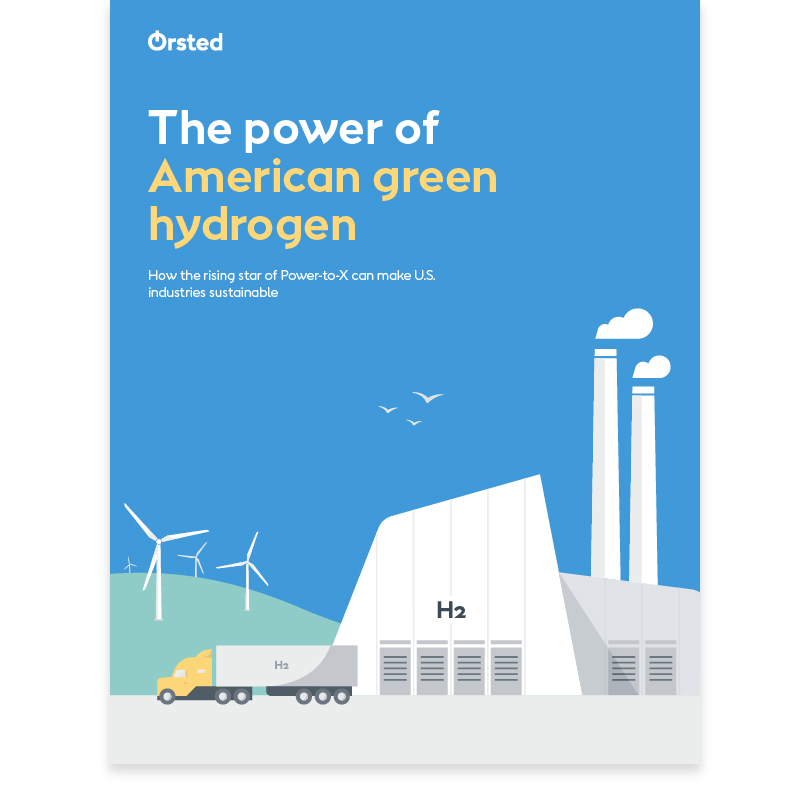 |
The Power of American Green HydrogenThe Power-to-X (P2X) industry has a solution to offer: green hydrogen. This zero-emissions energy – and the e-fuels derived from it – can sustainably replace the need for fossil fuels across sectors. Backed by new legislation, the US now has an opportunity to scale up green hydrogen production, becoming a global powerhouse in P2X. |
 |
Let’s open the path to progressEurope’s commitment to reach net zero by 2050 is as firm as ever. On top of decarbonisation, reaching this target will unlock the additional benefits, reduction in cost of electricity and reduced dependence on external sources of power – and governments, policy makers, and industry are working to deliver. Find out what this entails. |
 |
Deeper waters, stronger windsFloating wind turbines are bringing offshore renewable energy generation to new waters, expanding the global resource potential of wind energy. Today, floating offshore wind has begun the same journey that made fixed-bottom offshore wind a competitive renewable energy technology at scale. Learn how Ørsted is partnering with other leading providers to develop floating wind and realise its great potential. |
 |
Need for SpeedEurope's energy crisis and the latest alarming report by the IPCC all point towards the same solution: we need to significantly increase renewable energy and decrease our dependence on polluting fossil fuels for energy. Our latest white paper proposes a new approach towards the deployment of offshore wind and renewable power-to-X – from planning processes to integration – to ensure the buildout is both speedy and sustainable. |
 |
Getting on track for 1.5 °CGovernments and businesses must look to the future and realise that it isn't only a moral imperative to act on climate change but also a financial one. Those who fail to act will be less competitive in a net-zero world and will likely face negative impacts to their bottom line. |
 |
Unlocking a renewable energy futureA critical element in the fight against climate change will be the decarbonisation of the world’s energy supply. While the foundation for the energy transition is strong – the technologies exist and the investments are manageable in the right frameworks – change is not happening fast enough. This joint working paper with the World Resources Institute focuses on the challenges and solutions to scaling investment in renewable energy generation and provides actionable policy solutions to unlock the private sector investment needed to support the energy transition. |
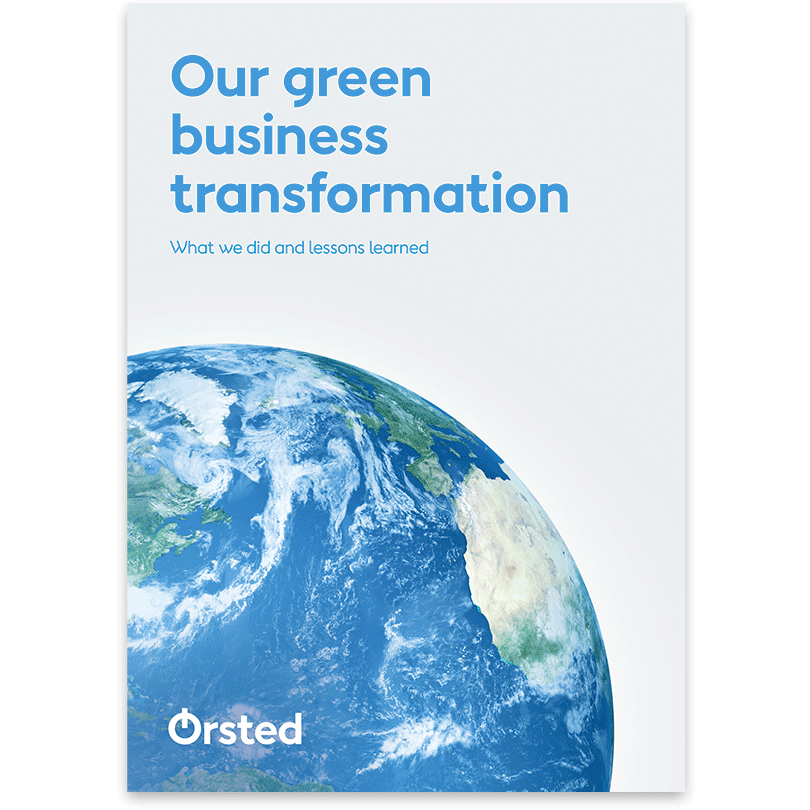 |
Our Green Business TransformationØrsted, now the world’s most sustainable energy company, used to be one of Europe’s most fossil fuel intensive. Since we decided to transform to a green business, financial performance has significantly improved, whilst to 2020 we have reduced our carbon emissions by 86%. Our transition has been quicker than many, and even ourselves, thought possible. This paper first describes our transformation and then offers our suggested learnings about how to execute such a green business transformation, so that our journey may inspire yours. |
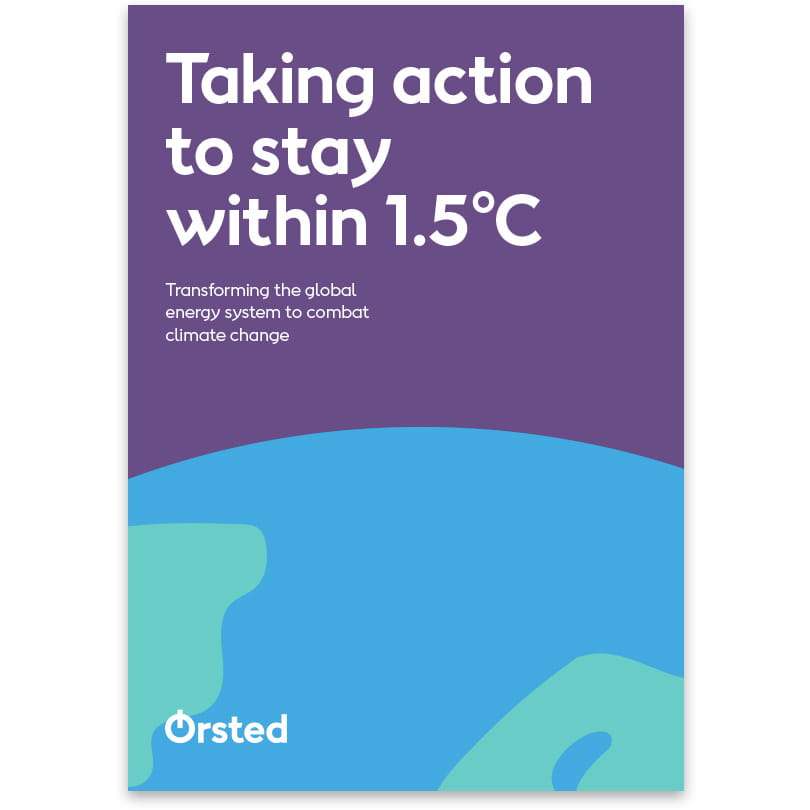 |
Taking action to stay within 1.5°CWith this paper, Ørsted wants to illustrate that it is possible to halve global emissions by 2030 and limit global warming to 1.5°C, protecting our shared home from runaway climate change. We have the solutions – notably cost-competitive solar and wind energy – required to decarbonise the energy system, which is the biggest contributor to global warming.
|
 |
A European green dealHow offshore wind can help decarbonise EuropeEurope has set out to become the world’s first climate neutral continent by 2050. This will require a massive buildout of renewable energy – including 450GW offshore wind generation – an ambitious, but feasible target. To get there, Europe needs a new approach to the offshore wind buildout. With this paper, Ørsted wants to point to three key questions, a new approach must address: how to find the space, how to ensure the infrastructure and how to enable the industry to scale.
|
 |
Making green energy affordableHow the offshore wind energy industry matured – and what we can learn from it.
|
 |
Europe powered by green energyHow the North Seas can lead the change - Europe sits on one of the world’s best offshore wind resources in the North Seas. Here, wind speeds are high, relatively constant and the waters are shallow, providing good conditions for bottom fixed foundations.
|
 |
Regulatory set-up for hybrid offshore wind projectsEurope is determined to become the world’s first climate neutral continent by 2050. To this end, replacing fossil fuels with renewable electricity is the single most important driver for decarbonization. This entails European power demand will grow by as much as 150% by 2050.
|
